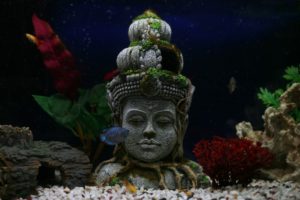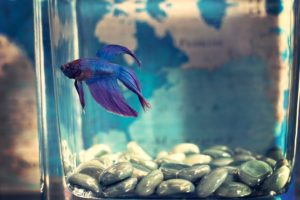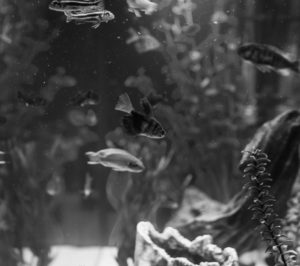Acclimation Scenarios

It is good to know that the betta fish by nature is very hardy.
This doesn’t necessarily mean that when you buy any betta fish you just dumped into the fish tank.
The temperature and water parameters are slightly different from the pet shop where you got your betta fish.
It is very important to know what is acclimation.
It is a method wherein the betta fish that you are going to transfer to the new fish tank needs to be assured of a successful transfer. If you just dump the betta fish to your new fish tank or a community tank there will several factors which might happen.
Betta fish might suddenly die of shock due to a sudden or abrupt change of temperature.
Betta fish might be a carrier of white spot or bacteria and would likely contaminate the community fish tank.
Acclimation to a community tank

As a responsible pet owner, it is necessary to have an extra fish tank ready to have the new betta fish tank mate quarantined. Transferring from the pet store to your fish tank will cause some minor stress.
For the hospital tank or quarantine tank, it would be fine to use 5 gallons or preferably a 10-gallon tank in case if you happen to use to for new plants and new tank mates.
Be sure to follow the Nitrogen Cycle Education 101 when preparing a quarantine tank or any fish tank.
Observe the betta fish on the quarantine tank for 2 weeks to see if there any signs of bacterial infection or parasites. If there are symptoms of infection then try to treat it immediately by following the treatment guidelines.
Do not use reverse osmosis water or de-ionized water which you might think is good for the fish. Just use the regular tap water and follow the nitrogen cycle education 101.
Acclimation to a new betta fish tank

This is the easiest since you do not need a quarantine fish tank anymore.
Since there are no other fish present on the new betta fish tank then you simply use it immediately.
You just have to make sure that the fish tank has been cycled properly.
There is no need to remove the gravel, decor, and plants anymore since it is a newly cycled tank.
The water parameters of the new betta fish tank are slightly different from the water from the container of the betta fish.
You can follow the three most common methods in acclimation for your betta fish.
Acclimation Methods
Floating Bag Method
This is the most common approach that most of the people are using which has been practiced.
You have to very careful when suspending the bag with the pet shop water in your betta community fish tank.
Most of the new and intermediate hobbyist assumes that the water for the pet shop is clean and have no problems. It would be a good practice that in the future to set up a separate quarantine or hospital tank for newly arrive betta fish tank mates to ensure that everything is correct.
It would be best that the pet store is the last stop before you go home running your errands or after your day’s work.
The reason is that this is to prevent ammonia build up inside the plastic bag or container of the betta fish tank mate. Imagine that the excrement of the fish is swirling inside the small plastic bag of the container.
When you arrive home at your community fish tank, it would be best to leave the bag floating on top of the aquarium for 5 minutes. Then you punch a hole in the bag and fill it with the aquarium water. Leave it for another 10 minutes and add some aquarium water again inside the plastic bag.
Repeat this procedure for 40 minutes.
Use a small fish net and slowly release it to your betta fish community aquarium.
Bucket Method
This is exactly the same method to the floating bag method but using a clean bucket instead.
Open the bag and remove about one-fourth of the water.
Replace it with the water from the aquarium.
You gradually put water to the bucket within 40 minutes. Just put enough water for the fish to be comfortable maybe about 5 glass of water from your established aquarium.
Slowly use a fish net to get hold of the betta fish and then slowly release it to your betta fish community aquarium.
I prefer the bucket method since it is not very messy compared to the floating bag method. But it really depends on how good you are in trying not to spill water all over.
Drip Method
This method is widely used for marine tropical fish since they cannot tolerate the extreme level of PH.
For the freshwater tropical fish, the two methods that I have outlined above is simple and straightforward.
But if you wanted to be sure and cautious on your fish especially if you have an angelfish tank mate in which they are a bit more sensitive than betta fish then you have to follow the drip method.
Get a tubing long enough from the aquarium to a clean bucket.
Keep in mind that the aquarium must be higher than the bucket since we will be using gravity for the water to drip to the bucket.
Make a small knot using a strong rubber band close to the center of the airline tubing this will be your drip control valve feature.
Use your mouth and try to quickly suck water from the aquarium into the clean bucket.
There should be a slow steady drip of water coming from your aquarium to the clean bucket at a rate of 1 drop per second, this can be approximate and doesn’t have to be exact 1 second.
The rate of the drip can even be 1 drip per 2 seconds.
Drip it until the water of the aquarium is about the same proportion as the water inside the plastic bag.
This process will probably last for 40 minutes or so.
After that then use a small net to catch the fish inside the bucket and slowly release it into your betta fish tank.
Observation

Now you have to observe your betta fish or betta fish mate for about one week.
When you are moving the fish to a new tank it is very stressful.
Most of the times the fish will be hiding in the corner and refuse to eat.
Normally the new fish will begin to have confidence moving about after a few days, so do not worry about the new fish doesn’t eat in a couple of days which is normal.
Try to see also if the new fish has contracted a disease or a carrier of any form of bacterial infection so that you can take action immediately.
When you are feeding in your aquarium, the new fish will try to follow the other fishes. So you do not have to worry about this.
Once you get the hang of it, you will be an expert in no time and you may want to add fishes for your community fish tank.
